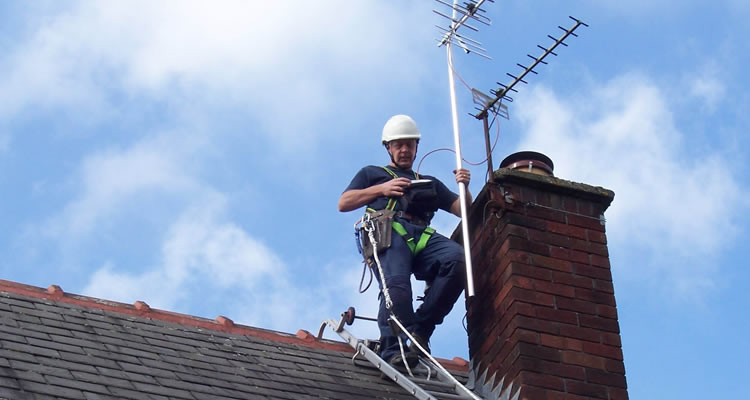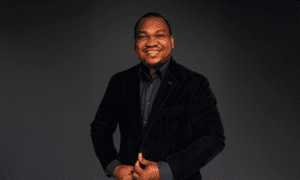- The Value of Television in the Modern Home
- What Makes a TV Aerial So Important?
- DIY vs Professional Installation
- Signal Strength and Picture Quality
- Safety Considerations for Roof Installations
- Hidden Costs of Improper DIY Setup
- Integration with Home Technology
- Long-Term Reliability and Future-Proofing
- Expert Recommendations That Save Time and Money
- A Setup That Brings Everything Together
The Value of Television in the Modern Home
Despite the rise of streaming services and on-demand content, traditional television remains a staple in millions of UK households. Whether it’s catching the morning news, watching live sports, or relaxing with Freeview favourites, a high-quality, uninterrupted signal is still an essential part of everyday life. And at the heart of that experience is one key component: your TV aerial.
What many homeowners overlook, however, is the difference between simply having an aerial and having one that is professionally installed and optimised. That difference can mean the gap between frequent signal dropouts and smooth, crystal-clear viewing, all day, every day.
What Makes a TV Aerial So Important?
A TV aerial isn’t just a wire on the roof – it’s the bridge between your home and the broadcast network. The better your aerial is positioned, aligned, and connected, the more reliable your viewing experience becomes. And while budget DIY kits might promise a quick fix, they often fail to deliver long-term results, especially in areas with signal challenges or complex layouts.
This is why services like Aerial Force continue to grow in popularity. Their engineers offer more than just installation; they provide tailored, location-specific solutions that take into account your environment, setup, and future needs – including integrations with devices like CCTV and smart systems for a truly connected home.
DIY vs Professional Installation
There’s a common temptation to take the DIY route when setting up a new aerial. After all, with kits readily available online and video tutorials a click away, it seems like a manageable task. But as many soon discover, fitting a TV aerial properly is far more nuanced than attaching a bracket and hoping for the best.
Professional installers are trained to evaluate multiple factors:
- Transmitter direction
- Signal strength in your exact location
- Nearby interference sources
- Elevation and access challenges
- Integration with your existing equipment
While DIY might save money up front, a poor installation can lead to frustration, rework, or even costly repairs. Investing in a professional service gives you peace of mind, knowing that the job is done right the first time.
Signal Strength and Picture Quality
The most common reason people upgrade or replace their aerial is because of poor signal or inconsistent picture quality. Pixelation, audio drop-outs, or missing channels are all signs that your current setup isn’t performing as it should.
Professional installers use signal meters to accurately measure strength and quality before installing or adjusting an aerial. They can align your equipment with the nearest and strongest transmitter, avoid physical obstructions, and ensure that your signal path is clean and uninterrupted. This level of precision is simply not achievable with guesswork or standard consumer tools.
In addition, professionals can recommend and fit boosters or filters if you’re in a region affected by 4G or 5G interference. These subtle touches make all the difference in delivering a truly high-definition experience.
Safety Considerations for Roof Installations
Installing an aerial isn’t just a technical job—it’s a physical one that involves working at height, handling tools and electrical cables, and ensuring secure fixtures in sometimes difficult weather conditions.
Climbing onto a roof with little experience or safety equipment is a significant risk. Accidents can happen quickly, especially if tiles are slippery, ladders unstable, or wind conditions unfavourable.
Professional installers are trained in height safety protocols and arrive fully equipped with the proper tools, safety harnesses, and protective gear. This ensures not only a safe installation but one that meets UK regulations and won’t pose a risk down the line.
Hidden Costs of Improper DIY Setup
What initially seems like a money-saving exercise can end up being more expensive in the long run. A poorly aligned aerial may appear to work fine one day, then cut out entirely the next. You may find yourself repeatedly troubleshooting, purchasing new cables, or booking multiple callouts to try and fix ongoing issues.
In contrast, a professional installation is typically guaranteed and includes post-installation checks to confirm everything is operating as it should. Many services also offer warranties, meaning if any problems do arise, you won’t be left footing the bill.
When you factor in potential repairs, wasted time, and unreliable service, the cost of a professional job quickly proves to be the more economical choice.
Integration with Home Technology
Modern homes are more connected than ever. Your TV aerial setup doesn’t exist in isolation—it often supports multiple TVs, set-top boxes, streaming devices, and even integrated systems like home security that rely on smart connectivity.
Professional installers can assess your entire layout and ensure your aerial supports every piece of connected equipment. This might involve signal splitters for multi-room setups, amplifiers for long cable runs, or discrete cable routing for clean aesthetics.
They’ll also ensure your installation works harmoniously with Wi-Fi, 5G signals, and other wireless systems in your home, reducing interference and improving overall performance.
Long-Term Reliability and Future-Proofing
As broadcasting technology evolves, so too do the requirements for aerial compatibility. While older aerials may still function, they often don’t pick up the full suite of digital channels now available—and they definitely won’t support any future updates to Freeview or ultra-HD broadcasting.
A professional installer will recommend an aerial that meets current standards and is built to handle potential changes in frequency or broadcasting power. This ensures you won’t need another upgrade anytime soon and saves money over time by avoiding early replacements.
Future-proofing also means choosing materials that last—rust-resistant brackets, UV-protected cables, and weather-sealed connections that withstand the unpredictable British climate.
Expert Recommendations That Save Time and Money
One of the greatest advantages of using a professional is their insight. They’ve installed thousands of aerials across all types of homes and properties, so they know what works best where. From choosing the right aerial model to determining the best mounting location, their expertise cuts through the noise of online advice and trial-and-error.
Instead of spending hours researching or repeatedly adjusting your setup, you get a fast, efficient installation backed by years of practical knowledge. In many cases, your new system will be fully operational within just a couple of hours—no stress, no fuss.
A Setup That Brings Everything Together
In today’s fast-paced, technology-driven world, it’s easy to overlook the basics. But having a solid, dependable TV aerial setup is still one of the most important features in any home. Whether you’re tuning into the morning news, watching your favourite drama, or simply relaxing after a long day, it’s the aerial that quietly makes it all possible.
By choosing professional installation, you’re not just paying for a better picture—you’re investing in the reliability of your home entertainment, the safety of your property, and the efficiency of your connected devices.
So when it comes time to upgrade, replace, or install your TV aerial, think beyond the bracket and cable. Think long-term. Think connected. Think smart. Because a truly great TV experience doesn’t happen by accident—it’s built on expert foundations.



































